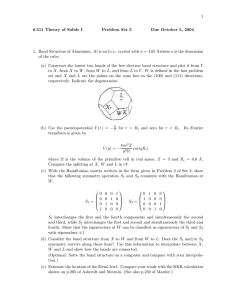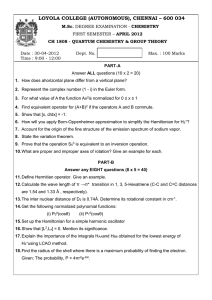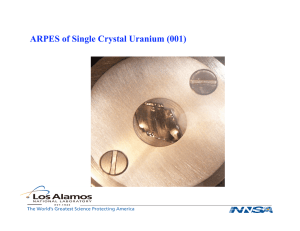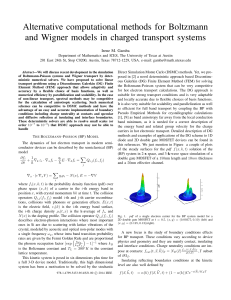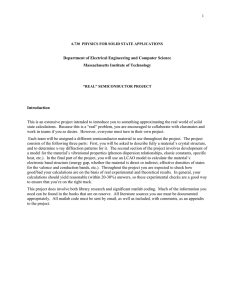Physics 211A, Fall 2014 ... 11/4/2014 LCAO band structure of Silicon
advertisement
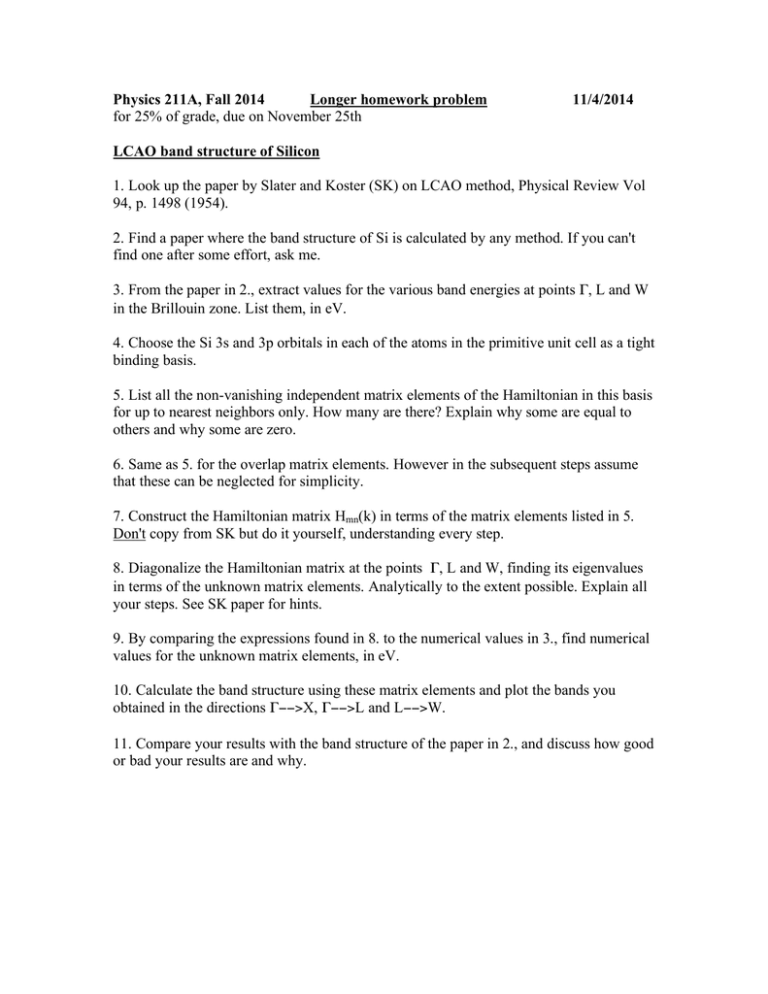
Physics 211A, Fall 2014 Longer homework problem for 25% of grade, due on November 25th 11/4/2014 LCAO band structure of Silicon 1. Look up the paper by Slater and Koster (SK) on LCAO method, Physical Review Vol 94, p. 1498 (1954). 2. Find a paper where the band structure of Si is calculated by any method. If you can't find one after some effort, ask me. 3. From the paper in 2., extract values for the various band energies at points Γ, L and W in the Brillouin zone. List them, in eV. 4. Choose the Si 3s and 3p orbitals in each of the atoms in the primitive unit cell as a tight binding basis. 5. List all the non-vanishing independent matrix elements of the Hamiltonian in this basis for up to nearest neighbors only. How many are there? Explain why some are equal to others and why some are zero. 6. Same as 5. for the overlap matrix elements. However in the subsequent steps assume that these can be neglected for simplicity. 7. Construct the Hamiltonian matrix Hmn(k) in terms of the matrix elements listed in 5. Don't copy from SK but do it yourself, understanding every step. 8. Diagonalize the Hamiltonian matrix at the points Γ, L and W, finding its eigenvalues in terms of the unknown matrix elements. Analytically to the extent possible. Explain all your steps. See SK paper for hints. 9. By comparing the expressions found in 8. to the numerical values in 3., find numerical values for the unknown matrix elements, in eV. 10. Calculate the band structure using these matrix elements and plot the bands you obtained in the directions Γ−−>X, Γ−−>L and L−−>W. 11. Compare your results with the band structure of the paper in 2., and discuss how good or bad your results are and why.
